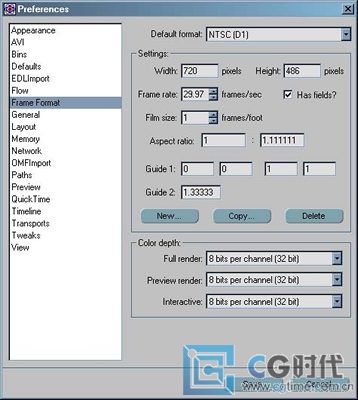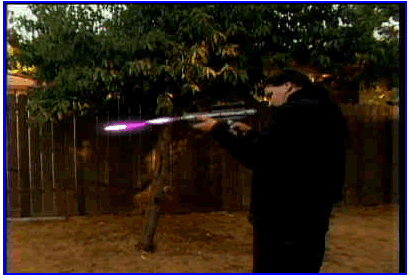Digital Fusion教程:Creating Sci-Fi Arsenals(1)
来源:互联网 作者:未知 发布时间:2010-10-24 08:30:30 网友评论 0 条
Digital Fusion教程:Creating Sci-Fi Arsenals

By Greg Morgan

点击图像观看最终效果
For a sci-fi project I was working on recently, I needed a way to create weapon blasts. I was given a rough idea of what the effect was supposed to look like -- a gaseous ball of plasma.
In the past, in movies like Star Wars, weapon blasts were hand rotoscoped frame by frame. On Star Trek: The Next Generation, they used a Quantel Paintbox for the phasers. Since this was a effects test for a project with a limited budget, spending several hundred thousand dollars for a Quantel Paintbox was out of the question. Initially I considered rendering an animation of the bolt in Newtek's Lightwave 3D or Illusion from Impulse Inc.and then compositing that element into the shot. However I wanted each bolt to be a little unique, and the idea of rendering a seperate element for each bolt was going to take to long. Ideally, I'd should be able to finish my composite and do the weapon effects in one application without having to switch back and forth.
About that time I saw the latest version of Digital Fusion by eyeon Software (www.eyeonline.com) demoed at Siggraph 2001 here in LA.
Digital Fusion is a fully integrated, non-linear compositing and special effects post-production system for the finishing, designing and effects creation used in feature films, HDTV, broadcast video, web-based and multimedia projects and more. Digital Fusion 3.1 expertly combines an incredible toolset with benchmark speed, bringing expensive high-end capabilities to the cost-effective desktop. DF has been used by Frantic Films in the opening sequence of the movie Swordfish, and by Digital Dominion for the movie Driven. It has also been used used in television by Digital Muse on such shows as Star Trek: Deep Space Nine and Star Trek: Voyager.
DF 3.1 is eyeon's 8th major release, marking a feature set of sophisticated tools and mature interface. Including an extremely robust particle system. This particle system is capable of simulating smoke, fire, water, etc. It has all of the behavior controls you'd expect in a particle system built into a 3D Application. But best of all, it's integrated directly into the main Fusion flow workspace. So I can tweak settings and instantly see how it looks in my final composite.
DF 3.1 also has a built in expression system, that while powerful is also easy for a non-programmer to use.
It should be noted that Digital Fusion is currently available only on Windows systems.
The test footage we shot was on NTSC SVHS, which of course means the footage was 29.97FPS with fields. However the project was going to be edited at 24FPS and the client wanted the final footage delivered as 24FPS. Fortunately, with DF I was able to down convert the footage in the same flow as the weapon tests. Again, the more I can stay in the same application, the happier I am.
- 2009-10-12
- 2009-10-12
- 2009-10-12
- 2009-10-12
- 2009-10-12
- 2009-10-12
- 2009-10-12
- 2009-10-12
- 2009-10-12
- 2009-10-12
- 2009-10-12
- 2009-10-12
- 2009-10-12
- 2009-10-12
- 2010-10-26
关于我们 | 联系方式 | 广告服务 | 免责条款 | 内容合作 | 图书投稿 | 招聘职位 | About CG Time
Copyright © 2008 CGTime.org Inc. All Rights Reserved. CG时代 版权所有